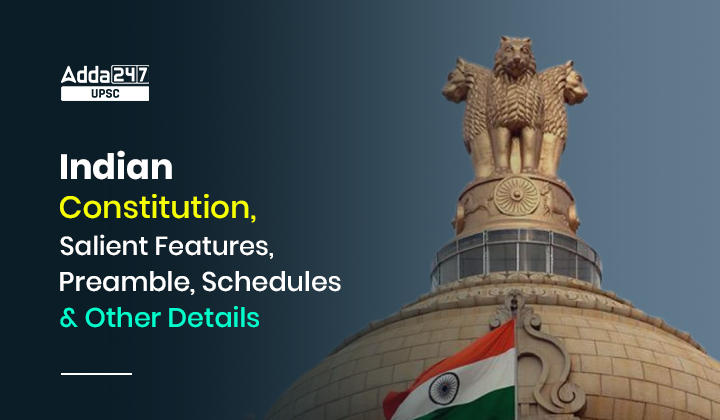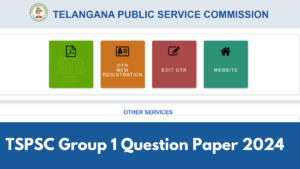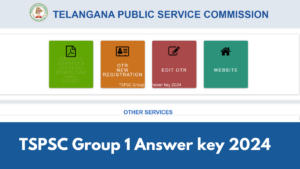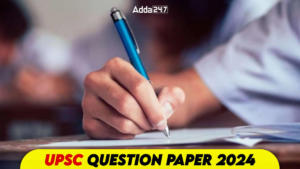Table of Contents
Indian Constitution
Indian Constitution: The Indian Constitution forms the fundamental structure and framework for India’s political system. It outlines the basic framework for governing the people and establishes the core elements of the state, including the following:
- The legislature,
- The executive and
- The judiciary
The Indian Constitution outlines the powers, roles, and responsibilities of different branches of the government. It also defines and governs their interactions with each other and with the people.
Establishment of the Indian Constitution
- The Indian Constitution was adopted by the Constituent Assembly on November 26, 1949.
- It officially came into full effect on January 26, 1950.
- Initially, the Indian Constitution comprised 22 parts, 395 articles, and 8 schedules.
- Over time, it has undergone 105 amendments, leading to an increase in the number of schedules to 12 and articles due to amendments.
- The Indian Constitution offers a distinctive set of foundational frameworks and principles.
- It enshrines fundamental rights and provides directives for the governance of the nation.
- Being the supreme law of the land, all citizens and authorities are obligated to adhere to it.
- The Constitution ensures a democratic, federal, and secular structure for the country.
- It delineates the powers and duties of various branches of government.
- Guaranteeing fundamental rights to all citizens ensures equality, liberty, and justice.
- The Constitution establishes checks and balances to prevent the misuse of power.
- It champions social justice and empowers marginalized segments of society.
- Upholding the principles of sovereignty, socialism, secularism, and democracy, the Constitution serves as a beacon.
- It establishes an independent judiciary to safeguard citizens’ rights and freedoms.
- The Constitution fosters respect for diversity while nurturing national unity and integrity.
Formation of the Indian Constitution Assembly
- The British India Government established the Constituent Assembly with the aim of drafting a constitution. Its inaugural session convened on December 9, 1946.
- Initially, the Constituent Assembly comprised only 211 members. Dr. Sachchidananda Sinha, the senior-most member, assumed the role of temporary President.
- Subsequently, Dr Rajendra Prasad was elected as the President of the Assembly, while H.C. Mukherjee and V.T. Krishnamachari were chosen as Vice-Presidents.
Importance of Drafting Committee Under Indian Constitution
The most significant committee among all was the Drafting Committee, which was chaired by Dr. Bhimrao Ambedkar. Established on August 29, 1947, the Drafting Committee’s primary responsibility was to prepare a draft of the new Indian Constitution. It comprised seven members as follows:
| Drafting Committee of Indian Constitution | |
| S.no | Members |
| 1 | Dr. B.R. Ambedkar (Chairman) |
| 2 | N. Gopalaswamy Ayyangar |
| 3 | Alladi Krishnaswamy Ayyar |
| 4 | Dr. K.M. Munshi |
| 5 | Syed Mohammad Saadullah |
| 6 | N. Madhava Rau (He replaced B.L. Mitter who resigned due to ill health) |
| 7 | T.T. Krishnamachari (He replaced D.P. Khaitan who died in 1948) |
Indian Constitution Articles, Chapters, and Amendments
- The Indian Constitution consists of a total of 22 parts, each addressing various subjects or areas of concern.
- Part VII of the Indian Constitution, which dealt with Part-B states, was removed by the 7th Constitutional Amendment Act of 1956.
- Part IV-A and Part XIV-A were introduced by the 42nd Constitutional Amendment Act of 1976.
- Part IX-A was added by the 74th Constitutional Amendment Act of 1992.
- Part IX-B was included by the 97th Constitutional Amendment Act of 2011.
| List of Indian Constitution Articles, Parts, and Associated Subjects | ||
| Parts | Subject | Articles |
| I | The Union and its territory | 1 to 4 |
| II | Citizenship | 5 to 11 |
| III | Fundamental Rights | 12 to 35 |
| IV | Directive Principles of State Policy | 36 to 51 |
| IV A | Fundamental Duties | 51-A |
| V | The Union Government | 52 to 151 |
| VI | The State Governments | 152 to 237 |
| VII | The States in Part B of the First Schedule (deleted) | 238 (deleted) |
| VIII | The Union Territories | 239 to 242 |
| IX | The Panchayats | 243 to 243– 0 |
| IX A | The Municipalities | 243-P to 243-ZG |
| IX B | The Co-operative Societies | 243-ZH to 243-ZT |
| X | The Scheduled and Tribal Areas | 244 to 244- A |
| XI | Relations between the Union and the States | 245 to 263 |
| XII | Finance, Property, Contracts, and Suits | 264 to 300- A |
| XIII | Trade, Commerce, and Intercourse within the Territory of India | 301 to 307 |
| XIV | Services under the Union and the States | 308 to 323 |
| XIV A | Tribunals | 323-A to 323-B |
| XV | Elections | 324 to 329- A |
| XVI | Special Provisions Relating to Certain Classes | 330 to 342- A |
| XVII | Official Language | 343 to 351- A |
| XVIII | Emergency Provisions | 352 to 360 |
| XIX | Miscellaneous | 361 to 367 |
| XX | Amendment of the Constitution | 368 |
| XXI | Temporary, Transitional, and Special Provisions | 369 to 392 |
| XXII | Short title, Commencement, Authoritative Text in Hindi, and Repeals | 393 to 395 |
The Preamble of the Indian Constitution
- The term ‘Preamble’ denotes the introductory section of the Indian Constitution, encapsulating its essence. Often referred to as the ‘identity card of the Constitution,’ it sets the tone for the document.
- Based on the ‘Objectives Resolution’ initiated by Pandit Nehru and endorsed by the Constituent Assembly, the Preamble of the Indian Constitution reflects foundational principles.
- Amendments to the Preamble were introduced by the 42nd Constitutional Amendment Act of 1976, incorporating three additional words: Socialist, Secular, and Integrity.
Key Features of the Preamble
The Preamble reveals the following ingredients :
- Source of the authority of the Indian Constitution states that the Constitution derives its authority from the people of India.
- Nature of Indian State- Preamble declares India to be of socialist, sovereign, democratic, secular, and republican polity.
- Objectives of the Indian Constitution- It specifies liberty, justice, equality, and fraternity as the objectives.
- Constitution date of adoption: 26th November 1949
Salient Features of the Indian Constitution
The salient features of the Indian Constitution are as follows:
- Lengthiest Written Constitution
- Drawn From Various Sources
- A blend of Rigidity and Flexibility
- Federal System with Unitary Bias
- Parliamentary Form of Government
- Synthesis of Parliamentary Sovereignty and Judicial Supremacy
- Integrated and Independent Judiciary
- Fundamental Rights
- Directive Principles of State Policy
- Fundamental Duties
- A Secular State
- Universal Adult Franchise
- Single Citizenship
- Independent Bodies
- Emergency Provisions
- Three-tier Government
- Co-operative Societies
Federal Features of the Indian Constitution
Federalism in India is a division of political power between the central and local units, forming a quasi-federal system. The Indian Constitution refers to India as a “Union of States,” with no right of secession. The Centre holds more power than the States.
Types of the Federation System in the Indian Constitution
- Holding Together Federation: The central government has more power than the states. Examples include India, Spain, and Belgium.
- Coming Together Federation: Independent states join together and share political powers equally without interference from the centre. Examples include the USA, Australia, and Switzerland.
Borrowed Features of the Indian Constitution
Indian Constitution is often termed a borrowed constitution as many of its features derive their origin from the constitutions of other countries. A list of such borrowed features and their respective source country is given below:
| List of Borrowed Features of the Indian Constitution | |
| Sources | Features Borrowed |
| Government of India Act of 1935 | -Federal Scheme, -Office of Governor, -Judiciary, -Public Service Commissions, -Emergency provisions and -Administrative details |
| British Constitution | -Parliamentary government, -Rule of Law, -Legislative procedure, -Single citizenship, -Cabinet system, -Prerogative writs, -Parliamentary privileges and -Bicameralism. |
| US Constitution | -Fundamental rights, -Independence of judiciary, -Judicial review, -Impeachment of the president, -Removal of Supreme Court and high court judges -post of vice president. |
| Irish Constitution | -Directive Principles of State Policy, -Nomination of members to Rajya Sabha and -Method of election of the president. |
| Canadian Constitution | -Federation with a strong Centre, -Vesting of residuary powers in the Centre, -Appointment of state governors by the Centre, -Advisory jurisdiction of the Supreme Court. |
| Australian Constitution | -Concurrent List, -Freedom of trade, -Commerce and intercourse, and -Joint sitting of the two Houses of Parliament. |
| Weimar Constitution of Germany | -Suspension of Fundamental Rights during Emergency. |
| Soviet Constitution (USSR, now Russia) | -Fundamental duties and -The ideal of justice (social, economic, and political) in the Preamble. |
| French Constitution | -Republic and the ideals of liberty, -Equality and -Fraternity in the Preamble |
| South African Constitution | -Procedure for amendment of the Constitution
-Election of members of Rajya Sabha. |
| Japanese Constitution | The procedure was established by Law |
Schedules of the Indian Constitution
In the Indian Constitution, there are a total of 12 schedules which are dealing with various subjects.
| List of Constitutional Schedules | |
| Constitutional Schedule | Subject Matter |
| First Schedule | 1. Names of the States and their territorial jurisdiction. 2. Names of the Union Territories and their extent. |
| Second Schedule | Provisions relating to the emoluments, allowances, privileges, and so on of: 1. The President of India 2. The Governors of States 3. The Speaker and the Deputy Speaker of the Lok Sabha 4. The Chairman and the Deputy Chairman of the Rajya Sabha 5. The Speaker and the Deputy Speaker of the Legislative Assembly in the states 6. The Chairman and the Deputy Chairman of the Legislative Council in the states 7. The Judges of the Supreme Court 8. The Judges of the High Courts 9. The Comptroller and Auditor General of India. |
| Third Schedule | Forms of Oaths or Affirmations for:
1. The Union ministers |
| Fourth Schedule | Allocation of seats in the Rajya Sabha to the states and the union territories. |
| Fifth Schedule | Provisions relating to the administration and control of scheduled areas and scheduled tribes. |
| Sixth Schedule | Provisions relating to the administration of tribal areas in the states of Assam, Meghalaya, Tripura, and Mizoram. |
| Seventh Schedule | Division of powers between the Union and the States in terms of List I (Union List), List II (State List), and List III (Concurrent List). Presently, the Union List contains 98 subjects (originally 97), the State List contains 59 subjects (originally 66) and the Concurrent List contains 52 subjects (originally 47). |
| Eighth Schedule | Languages recognized by the Constitution. Originally, it had 14 languages but presently there are 22 languages. They are Assamese, Bengali, Bodo, Dogri (Dongri), Gujarati, Hindi, Kannada, Kashmiri, Konkani, Mathili (Maithili), Malayalam, Manipuri, Marathi, Nepali, Odia, Punjabi, Sanskrit, Santhali, Sindhi, Tamil, Telugu, and Urdu. Sindhi was added by the 21st Amendment Act of 1967; Konkani, Manipuri, and Nepali were added by the 71st Amendment Act of 1992; and Bodo, Dongri, Maithili, and Santhali were added by the 92nd Amendment Act of 2003. Oriya was renamed ‘Odia’ by the 96th Amendment Act of 2011. |
| Ninth Schedule | Acts and Regulations (originally 13 but presently 282)32 of the state legislatures dealing with land reforms and the abolition of the zamindari system and of the Parliament dealing with other matters. This schedule was added by the 1st Amendment (1951) to protect the laws included in it from judicial scrutiny on the ground of violation of fundamental rights. However, in 2007, the Supreme Court ruled that the laws included in this schedule after April 24, 1973, are now open to judicial review |
| Tenth Schedule | Provisions relating to disqualification of the members of Parliament and State Legislatures on the ground of defection. This schedule was added by the 52nd Amendment Act of 1985, also known as Anti-defection Law |
| Eleventh Schedule | Specifies the powers, authority, and responsibilities of Panchayats. It has 29 matters. This schedule was added by the 73rd Amendment Act of 1992. |
| Twelfth Schedule | Specifies the powers, authority, and responsibilities of Municipalities. It has 18 matters. This schedule was added by the 74th Amendment Act of 1992. |
Relevance of the Indian Constitution in UPSC
Constitution of India: The Indian Constitution covers various constitutional provisions that are important for both UPSC Prelims 2023 and UPSC Mains Exam (Indian Constitution and Various Features).




 TSPSC Group 1 Question Paper 2024, Downl...
TSPSC Group 1 Question Paper 2024, Downl...
 TSPSC Group 1 Answer key 2024 Out, Downl...
TSPSC Group 1 Answer key 2024 Out, Downl...
 UPSC Prelims 2024 Question Paper, Downlo...
UPSC Prelims 2024 Question Paper, Downlo...
